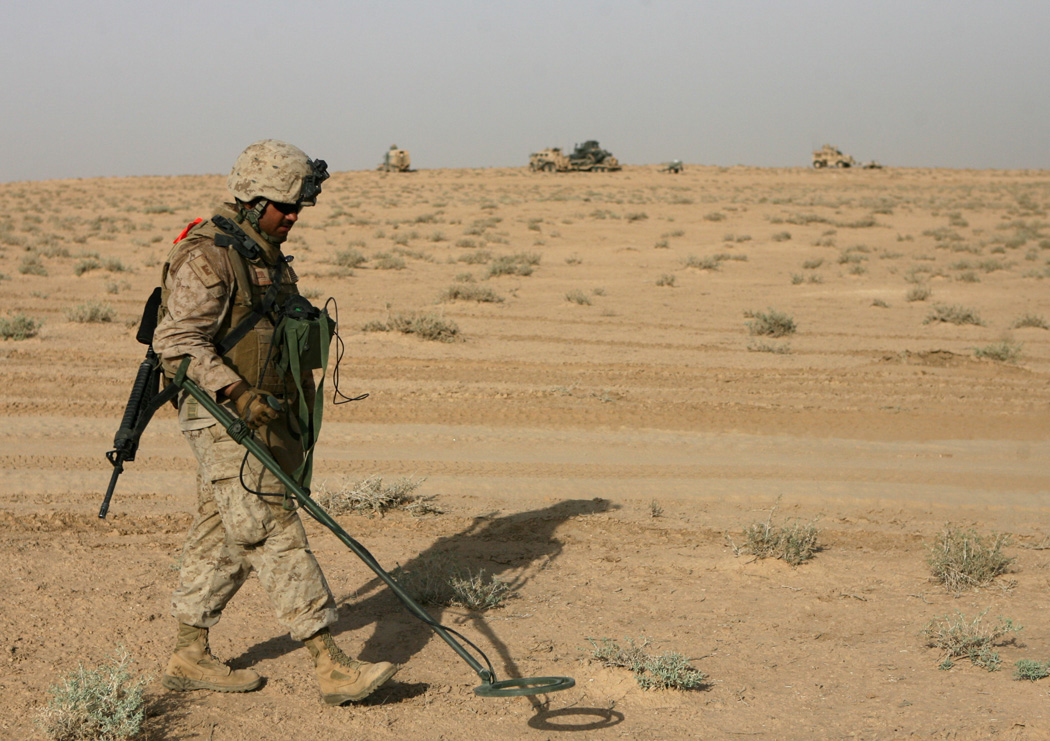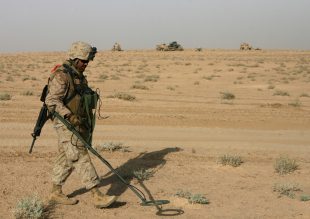
Two Koreas begin clearing mines along DMZ
The two Koreas began removing landmines buried along the Military Demarcation Line (MDL) in the Demilitarized Zone (DMZ), Monday, to fulfill a joint military agreement signed during the latest inter-Korean summit last month, the Ministry of National Defense said Monday. The move is in line with their bilateral agreement to disarm the DMZ. Both sides will remove mines on either side of the MDL for 20 days, according to the defense ministry. “Starting with the removing of mines, both sides will make efforts to carry out the military agreement in a systematic and normal manner,” the ministry said in a statement. South Korea plans to focus on clearing away mines buried in eastern and western grassy areas in the DMZ as well as those around surveillance towers.
Under the agreement, both sides will also clear mines and explosives buried at “Broken Arrow,” an upland area in Cheorwon, Gangwon Province, for two months from Monday. Alongside the JSA, Seoul and Pyongyang agreed to remove mines there as it was chosen as a trial place to look for the remains of those who were killed during the 1950-53 Korean War. The remains of hundreds of soldiers from the two Koreas and the United Nations forces are estimated to be buried at the historic site. This is the first time the two Koreas have agreed to push for the joint search and repatriation of war remains. This comes at a time when both sides are showing unprecedented signs of reconciliation following a series of inter-Korean summits.
In April, South Korean President Moon Jae-in met with North Korean leader Kim Jong-un in a historic summit at the inter-Korean border village of Panmunjeom where both sides signed a broad agreement promising lasting peace on the peninsula through the easing of military tension. Following the mine removal mission, the two sides will start searching for war remains for seven months starting next April 1, according to the ministry. The two Koreas plan to form a joint team by the end of next February to conduct the searches. “Both sides also plan to finish building roads (in the upland area) by the end of the year after removing the mines,” the ministry said.
South and North Korea will build a 12-meter-wide road in the area to carry the war remains on each side. The roads from both sides will be connected later. “Once the roads are established, the two Koreas are expected to speed up extending the ongoing peace momentum,” a military official said. The inter-Korean road will also help the two Koreas boost their plans to reconnect railways and highways, according to the official. Last week, Cheong Wa Dae said Seoul and Pyongyang will embark on joint inspections sometime this month to connect the two countries by rail. Cheong Wa Dae has raised hopes of holding a groundbreaking ceremony for inter-Korean railways and highways this year. The two Koreas will also seek to work with the United Nations Command (UNC) on their efforts to continue easing military tension. In August, the UNC disapproved of South Korea’s plans to conduct an inspection of railway conditions in the North, citing Seoul’s failure to provide any specific reasons for this.
By Lee Min-hyung
(Korea Times)



